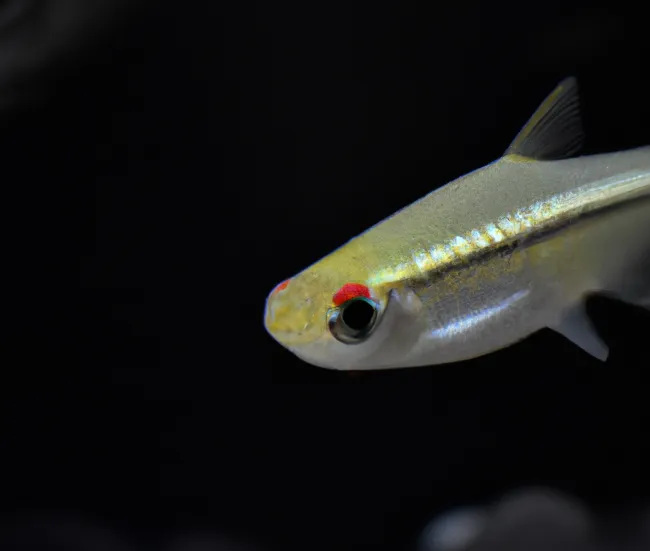Ikan Seluang: Habitat, Classification, and Health Benefits
Ikan seluang, a fish species that is commonly found in rivers and is native to the island of Sumatra in Indonesia, is known for its unique features, taste, and nutritional value. In this article, we will explore the various aspects of ikan seluang, including its habitat, classification, and health benefits.
Habitat of Ikan Seluang
Ikan seluang is primarily found in rivers and swamps of Sumatra and Kalimantan, two islands in Indonesia. This fish species is known to live for about three to six years, and it usually appears on the surface of the water during the rainy season. During this season, the water levels in the rivers increase, making it easier for ikan seluang to move around and find food.
In contrast, during the dry season, when the temperature of the water rises, ikan seluang will gather under trees for shelter. The ideal temperature for this fish species is around 22 to 26°C.
Classification of Ikan Seluang
Ikan seluang belongs to the Rasbora argyrotaenia species and is classified under the following categories:
- Kingdom: Animalia
- Phylum: Chordata
- Subphylum: Vertebrata
- Class: Actynopterygii
- Subclass: Neopterygii
- Order: Cypriniformes
- Family: Cyprinidae
- Genus: Rasbora
- Species: Rasbora argyrotaenia
Morphological Characteristics of Ikan Seluang
Ikan seluang is known for its physical characteristics, which include:
1. Physical Appearance
This fish species has a flat and elongated body with thin scales that are attached to its body. Additionally, ikan seluang has a pearly-white color with black stripes along the sides of its body. The stripes tend to fade as the fish matures. Furthermore, ikan seluang has a small body size.
Health Benefits of Ikan Seluang
Ikan seluang is known for its delicious taste and high nutritional value. It contains various nutrients that provide numerous benefits to the body. Some of the health benefits of ikan seluang include:
Reducing the Risk of Heart Disease
Heart disease is a severe health condition that poses a threat to human life. The good news is that ikan seluang can reduce the risk of heart disease due to its low-fat, high-protein content, and omega-3 fatty acids, which are beneficial to heart health. Consuming ikan seluang can reduce the risk of heart attacks and strokes.
Boosting Brain Health
Ikan seluang is also beneficial for the brain. This fish species contains high amounts of omega-3 fatty acids, which are essential for brain health. Omega-3 fatty acids play a crucial role in maintaining cognitive function and reducing the risk of age-related cognitive decline.
Supporting Eye Health
Ikan seluang is rich in vitamin A, a nutrient that is essential for eye health. This vitamin can prevent eye disorders, such as night blindness, and promote healthy vision.
Boosting Immunity
Ikan seluang contains high amounts of protein, which is essential for maintaining a healthy immune system. Protein plays a critical role in building and repairing body tissues, as well as producing antibodies that fight against diseases and infections.
Improving Skin Health
Ikan seluang is rich in vitamin E, which is essential for
healthy skin. This vitamin can prevent premature aging, reduce inflammation,
and protect the skin from sun damage.
Fish farming is essential for maintaining the sustainability of fish and preventing their extinction. One such fish that can be consumed or used as an ornamental fish is the Seluang fish. The following are the steps for breeding Seluang fish:
Preparation of Breeding and Parental Care Tank
The first step is to prepare a tank or place to keep the Seluang fish. Usually, Seluang fish is kept in a breeding medium such as an aquarium, pond, or fiber tank. In addition, the male and female Seluang fish parents are always placed in different places. The usual feed for Seluang fish is bloodworms or Chironomus sp., which is given twice a day, in the morning and evening.
Selection of Male and Female Parents
The next process is the selection of male and female Seluang fish parents. The selection of parents is carried out by stripping. The mature male Seluang fish produces a milky white liquid when stripped, which is a characteristic of mature gonads. The mature female Seluang fish can be identified by its enlarged belly, which feels soft to the touch, and it produces eggs when stripped.
Breeding Process
The third step is the breeding process, which can be done semi-naturally with the help of hormones to speed up the breeding process. The mature male and female Seluang fish parents are injected with Ovaprim, which contains GnRH and Domperidon hormones that stimulate ovulation and spermiation. The injection is done in the late afternoon. After the injection, the male and female Seluang fish parents are placed in the same tank in equal numbers (1:1 ratio), and the breeding process can occur in the morning.
Egg Hatching Process
The next step is the hatching of the Seluang fish eggs. The parents are moved to a breeding pool, and the eggs are cared for until they hatch. To prevent fungal attacks on the eggs, the water is changed, and methylene blue is added. The fertilized Seluang fish eggs hatch after 24-30 hours.
Larvae and Fingerling Care
The care of Seluang fish larvae and fingerlings is critical. Newly hatched larvae do not need to be fed for about three days because they still have egg yolk reserves. Feed is given to growing fish three times a day in the morning, afternoon, and evening. The food given to the larvae should be the best quality possible to ensure proper growth and development. A good food option is boiled egg yolks, which are given for the first seven days. After seven days, the fingerlings are given water fleas or Daphnia sp.
In conclusion, fish farming, particularly the breeding of
Seluang fish, is important to maintain their sustainability and prevent their
extinction. By following the above steps for breeding Seluang fish, you can
enjoy its consumption and use as an ornamental fish.


